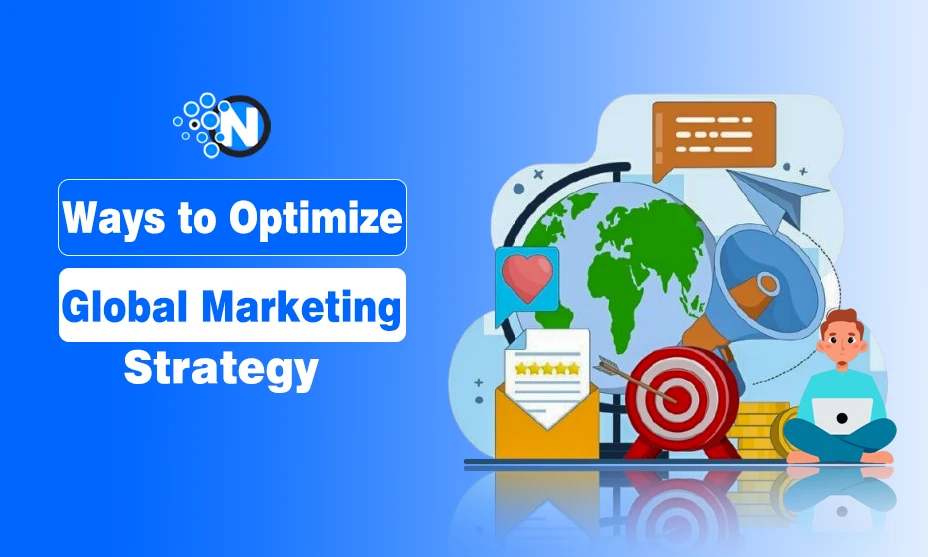10 Proven Ways to Optimize Global Marketing Strategy
Global marketing is an essential investment for businesses of all sizes and in any industry. The key to success lies in developing a comprehensive strategy that connects you with potential customers worldwide and ensures your products or services are well-positioned within international markets. Small businesses can use social media platforms, websites, and other online tools to participate in global marketing.
However, optimizing a global marketing strategy isn’t always easy; it requires careful research and strategic planning. Here are 8 practical tips to make your global campaigns more efficient and create effective promotional initiatives in various regions worldwide to simplify the process.
What is Global Marketing?
Global marketing is the process of promoting and selling products or services worldwide. It aims to establish a brand or business in multiple countries and create a unified message transcending national borders. Global marketing often involves considerable research, planning and communication to ensure a product or service is successfully marketed to consumers worldwide.
Businesses can get some of these benefits while engaging in global marketing,
- Expand their customer base beyond local markets.
- Increase brand awareness and credibility on an international scale.
- Drive higher revenue growth by tapping into new market opportunities.
- Leverage economies of scale, reducing costs by selling products across multiple regions.
Global Marketing Strategy Optimization Tips:
A global marketing strategy is a plan of action to promote and sell a product or service to a worldwide audience. The strategy focuses on developing a unified message and approach across multiple countries and cultures. It considers various factors such as language, cultural differences, regulations, and market conditions in different regions around the globe. Here are the tips to optimize the global marketing strategy:

1. Research Your International Audience:
A global business presence can be advantageous, but not researching your international audience’s culture, language, and values may become a liability. Companies often make the mistake of assuming that their successful strategies at home will work elsewhere.
- Understand local cultures, language, and values to avoid communication pitfalls.
- Analyze consumer behavior in different regions to customize your approach effectively.
- Use market research tools to gather insights on local preferences.
Understanding these can improve communication drastically and help create effective strategies for their respective marketplaces, ultimately resonating with a wider audience.
2. Choose the Right Platforms:
It is key to reach your global customers by utilizing the right platforms, such as local social media sites. When trying to expand into new markets, it’s essential to identify your target audience and determine what kind of content resonates with them.
Did you know? Some countries favor specific platforms – WeChat in China, VKontakte in Russia, and LINE in Japan. Adapting to these can boost engagement.
It’s helpful to use their local language and incorporate familiar image to better connect with foreign audiences. Conducting thorough research and planning ahead can significantly improve this.
3. Adopt Localization:
Location-specific content helps involve locals by putting relevant topics front and center, which can be the difference between the success and failure of marketing campaigns. You should take the time to understand local cultures and cutomize your content accordingly correctly. Here’s what to do:
- Translate and localize content for different languages and cultures.
- Adapt images, colors, and symbols to suit local preferences.
- Use geolocation-based targeting to enhance engagement.
4. Utilize Digital Ads:
Digital ads work well with social media campaigns as they offer a more efficient way to reach a global audience. Hence this is one of the best ways to optimize your global marketing strategy. That’s why many top brands use digital ads to promote their products and services worldwide.
- Run targeted campaigns in specific countries or regions.
- Adjust ad spend based on local market response to maximize ROI.
- Use localized creatives and messaging for higher engagement.
- Experiment with different ad formats, such as video, display, and social media ads, depending on regional preferences.
5. Optimize Your Content:
Companies that create content without considering the cultural nuances of their target audience are likely to face an unfavorable reception; the materials will appear awkward and be viewed as insensitive or even downright offensive.
The key to success in diverse markets is taking the time to do the research: get to know your target reader base, and take note of jargon, syntax, tone, humor, and other elements of particular relevance related to a region before deciding on a message or type of media. For this, it is profitable to design a content marketing strategy.
Pro Note
⭐ Conduct keyword research separately for each region – what works in one country may not have the same search intent in another. Also, optimize for voice search as its popularity grows worldwide.
6. Make Use of Local Influencers:
Local influencers play a pivotal role in shaping consumer opinions and purchase decisions. Partnering with influencers through influencer marketing who have a strong presence in your target market can significantly enhance brand credibility and customer engagement.
Example:
Many global brands, such as Nike and Coca-Cola, collaborate with regional micro-influencers to create authentic and localized marketing campaigns that drive significant engagement and brand loyalty.
Why Local Influencers Matter to these big brands?
- They have strong credibility and trust within their communities.
- They offer authentic storytelling that enhances brand connection.
- Their insights help refine marketing approaches.
- Influencers provide valuable feedback on how the product fits the local market.
7. Keep Your SEO Up-to-Date:
Search engine optimization (SEO) is a key component of any global marketing strategy. SEO helps you rank higher in search engines, increasing visibility and helping your brand stand out when potential customers search for products and services. This is especially difficult in international markets due to language barriers, but with the right strategies, you can succeed.
It’s essential to use keywords that are relevant and specific to each market, as well as create content that is optimized for those markets. Some of the key SEO best practices for global marketing are:
- Optimize for Local Search Engines
- Multilingual and Multiregional SEO
- Keyword Research for Each Market
- Mobile Optimization
- Technical SEO Considerations
8. Measure Your Results:
Measuring the success of global campaigns can be complex, yet analytics are essential for success. Taking data-driven approaches enables you better to understand your campaign’s performance in different markets and make any necessary adjustments.
- Analytics to evaluate global campaign performance.
- Customer feedback to understand local preferences.
- Continuous strategy optimization based on data insights.
- Engagement rate, conversion rate, and customer retention by region.
Final Summary
Overall, reaching your international audience will require research and commitment to localization. You should keep up with SEO trends specific to each market, choose the right platforms for each region, measure performance and make adjustments when necessary.
Preparing for an international customer base isn’t easy, but with proper research and tactics in place, you’ll be sure to achieve success worldwide. Start small, scale strategically, and always refine based on insights!





